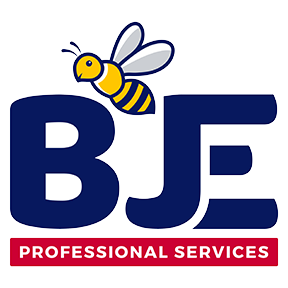Developing an effective recruitment plan is crucial for attracting top talent and ensuring your company’s success. A well-structured recruitment plan aligns your hiring process with your company’s goals, helping you manage recruitment efforts efficiently and strategically.
This step-by-step guide will cover how to assess your current situation, define clear recruitment goals, create detailed job descriptions, source candidates effectively, and implement a thorough screening and selection process.
Additionally, we’ll discuss the importance of onboarding new hires and continuously improving your recruitment strategy to stay competitive in the ever-evolving job market. Let’s dive into the steps for how to develop a recruitment plan that will set you up for success.
Step 1: Assessing the Situation
Assessing the current situation is crucial to developing an effective recruitment and hiring plan. Start by evaluating your current hiring needs. This involves identifying job openings, understanding the skills required, and determining the number of positions that need to be filled.
Analyze past recruitment metrics such as time to hire, cost per hire, and the effectiveness of various recruitment efforts. Use your applicant tracking system (ATS) to gather data on your recruitment process, including sources of hires, conversion rates, and retention rates.
Gather feedback on successful recruitment strategy from key stakeholders including hiring managers, recent hires, and candidates. This feedback can provide valuable insights into what is working well and what needs improvement in your recruitment strategy.
Regularly reviewing this information helps you identify gaps and opportunities in your current approach.
Step 2: Defining Your Recruitment Goals
Defining clear recruitment goals is essential for aligning your recruitment efforts with your company’s objectives. Start by understanding your company goals and how they translate into hiring needs. Collaborate with hiring managers to set specific, measurable objectives such as reducing time to hire by 20% or increasing the number of qualified candidates in the recruitment funnel.
Establish a Budget
Establish a recruitment budget that aligns hiring processes with these goals. This budget should cover job postings, recruitment tools, and any external support such as recruitment agencies. Setting realistic timelines for each hiring process will help manage expectations and ensure a smooth hiring process.
Create a Schedule
Prioritize roles based on business goals and create a recruitment calendar to plan your recruitment activities throughout the year. This proactive approach ensures that you and the recruitment team are prepared to meet your hiring needs efficiently and effectively.
Step 3: Developing the Headcount Plan
Creating a solid headcount plan is essential for effective recruitment planning. Begin by collaborating with department heads to determine the specific hiring needs for each team. This involves understanding the roles required to meet your company’s goals and the skills necessary for each position.
Prioritize these roles based on their importance to your business objectives. Some positions might be more urgent due to strategic initiatives or critical projects.
Ensure that your headcount plan includes both new positions and potential backfills for current employees who might leave or be promoted. This proactive approach helps you stay prepared for any staffing changes and maintain operational continuity.
Step 4: Creating Job Descriptions
Creating compelling job descriptions is key to attracting top talent. Start by outlining the responsibilities, qualifications, and skills required for each role. Be clear and detailed to ensure potential candidates understand what the full job description entails.
Promote Your Company's Culture
Highlighting the company culture and brand in your job descriptions can make a significant impact. Showcase your company’s values and mission to attract candidates who align with your organizational goals. Include testimonials from current employees to give candidates a sense of what it’s like to work at your company.
Important Tip: Be sure to include information about your company culture on your website and keep it consistent with job board information. Inconsistent information creates mistrust toward your organization and will cost you potential candidates.
Detail the perks and benefits your company offers. Mention aspects such as flexible working hours, health benefits, career development opportunities, and any unique benefits that set your company apart. This not only attracts top talent but also helps in building a strong employer brand.
Utilize employee value propositions to clearly communicate the advantages of working for your company. This can include career growth opportunities, a supportive work environment, and the impact candidates can make by joining your team.
By developing clear, attractive job descriptions and effectively highlighting your company culture, you can draw in qualified candidates who are a perfect fit for your organization.

Step 5: Sourcing Candidates
Sourcing candidates effectively is crucial to finding top talent for your open positions. Start by utilizing various online job boards to post your job openings. Platforms like LinkedIn, Indeed, and Glassdoor can help you reach a wide audience of job seekers.
Set up a Referral Program
Incorporate employee referrals into your recruitment and hiring strategy. An employee referral program can encourage your current employees to recommend qualified candidates from their networks. This method often leads to high-quality hires who are a good cultural fit.
Use Social Media Platforms to Boost Hiring
Leverage social media for talent sourcing. Platforms like LinkedIn, Twitter, and Facebook are excellent for reaching passive job seekers who may not be actively looking for a job but are open to new opportunities. Engaging with potential candidates through social media can help build a targeted talent acquisition pipeline.
Let Recruiters do the Heavy Lifting
Consider working with recruitment agencies for specialized roles or job vacancies when you need to fill positions quickly. Recruitment agencies have the expertise and resources to find qualified candidates efficiently.
Building a talent pipeline is another effective strategy. This involves identifying and engaging potential candidates for future job openings. Keep a database of qualified job candidates you’ve previously interviewed or sourced, and maintain communication with them.
By diversifying your sourcing and recruiting strategies, and utilizing multiple channels, you can ensure a steady flow of qualified candidates into your recruitment funnel.
Step 6: Screening and Selection Process
Implementing an efficient screening and selection process is key to finding the best candidates for your roles. Start with a robust applicant tracking system (ATS) to streamline your hiring and recruiting process. An ATS can help you manage job postings, track applications, and screen candidates efficiently.
Use pre-employment assessments to evaluate candidates’ skills, personality, and cultural fit. These assessments can provide valuable insights into a candidate’s suitability for the role and help you make informed hiring decisions. Common assessment tools include skills tests, cognitive ability tests, and personality questionnaires.
Conduct thorough background checks to verify the information provided by candidates. This step helps ensure you are hiring trustworthy and qualified individuals. Background checks typically include verifying employment history, education, and checking for any criminal records.
The Interview Process
Structure your interview process to assess candidates effectively. Use a combination of behavioral and competency-based interviews to evaluate how candidates have performed in past roles and how they might handle situations in your organization. Ensure that your hiring team is trained in effective interviewing techniques.
Create a candidate selection process that involves multiple rounds of interviews and assessments. This helps you evaluate candidates from different perspectives and make a well-rounded hiring decision. Ensure that all stakeholders, including hiring managers interviewing candidates and team members, are involved in the interview process to provide diverse insights.
Step 7: Onboarding New Hires
Onboarding new hires effectively sets the stage for their success in your company. A structured onboarding process is vital for ensuring new employees feel welcomed and are well-prepared to start their roles.
Start by developing a comprehensive onboarding plan that includes an orientation program to introduce new hires to the company culture, mission, and values. Provide a detailed overview of their job responsibilities, team structure, and performance expectations. Ensure they have access to all necessary tools and resources from day one.
Mentor for Immediate Success
Assign a mentor or buddy to help new employees acclimate to their new environment. This support can make a significant difference in their comfort level and productivity. Regular check-ins during the first few months can help address any questions or concerns new hires may have.
Measure the success of your onboarding process through feedback from new hires and their managers. This feedback can help you identify areas for improvement and ensure your onboarding process remains effective.

Step 8: Strive for Continuous Improvement
Continuously improving your recruitment plan is essential for maintaining an effective hiring process. Regularly review and update your strategic recruitment plan, based on data and feedback from stakeholders.
Use metrics such as time to hire, cost per hire, and quality of hire to assess the effectiveness of your recruitment efforts. Analyze this data to identify trends and areas for improvement. For example, if you notice that certain job boards consistently yield high-quality candidates, you might decide to allocate more of your recruitment budget to those platforms.
Solicit feedback from hiring managers, candidates, and new hires to gain insights into their experiences. This feedback can highlight strengths and weaknesses in your recruitment process and provide valuable information for making improvements.
Stay current with industry trends and best practices by attending conferences, participating in webinars, and reading industry publications. Implementing new strategies and technologies can help you stay competitive and attract top talent.
Develop, Implement and Refine Your Strategy
Developing a successful recruitment plan involves assessing your current situation, defining clear recruitment goals, creating detailed job descriptions, sourcing candidates effectively, and implementing a thorough screening and selection process. Additionally, a structured onboarding process and a commitment to continuous improvement are crucial for long-term success.
Following these steps, you can build a robust recruitment strategy that attracts and retains top talent.
